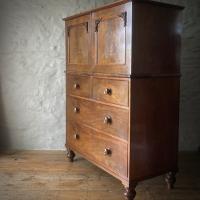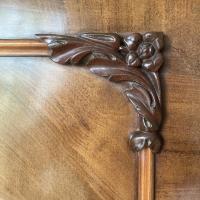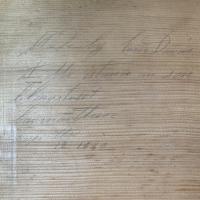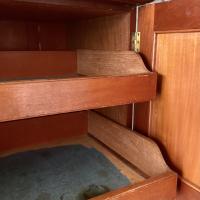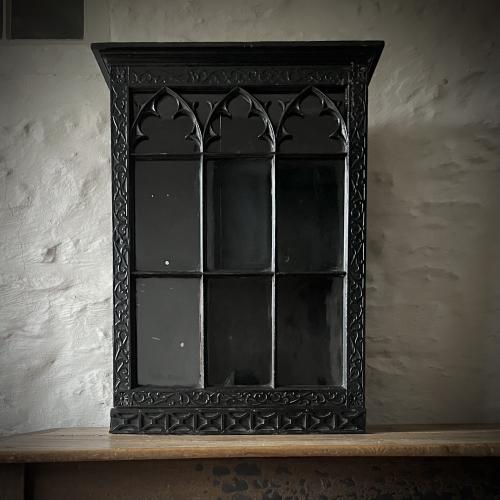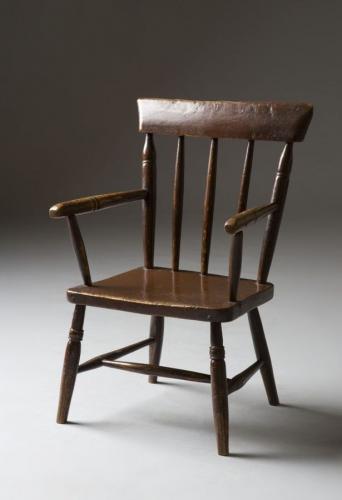
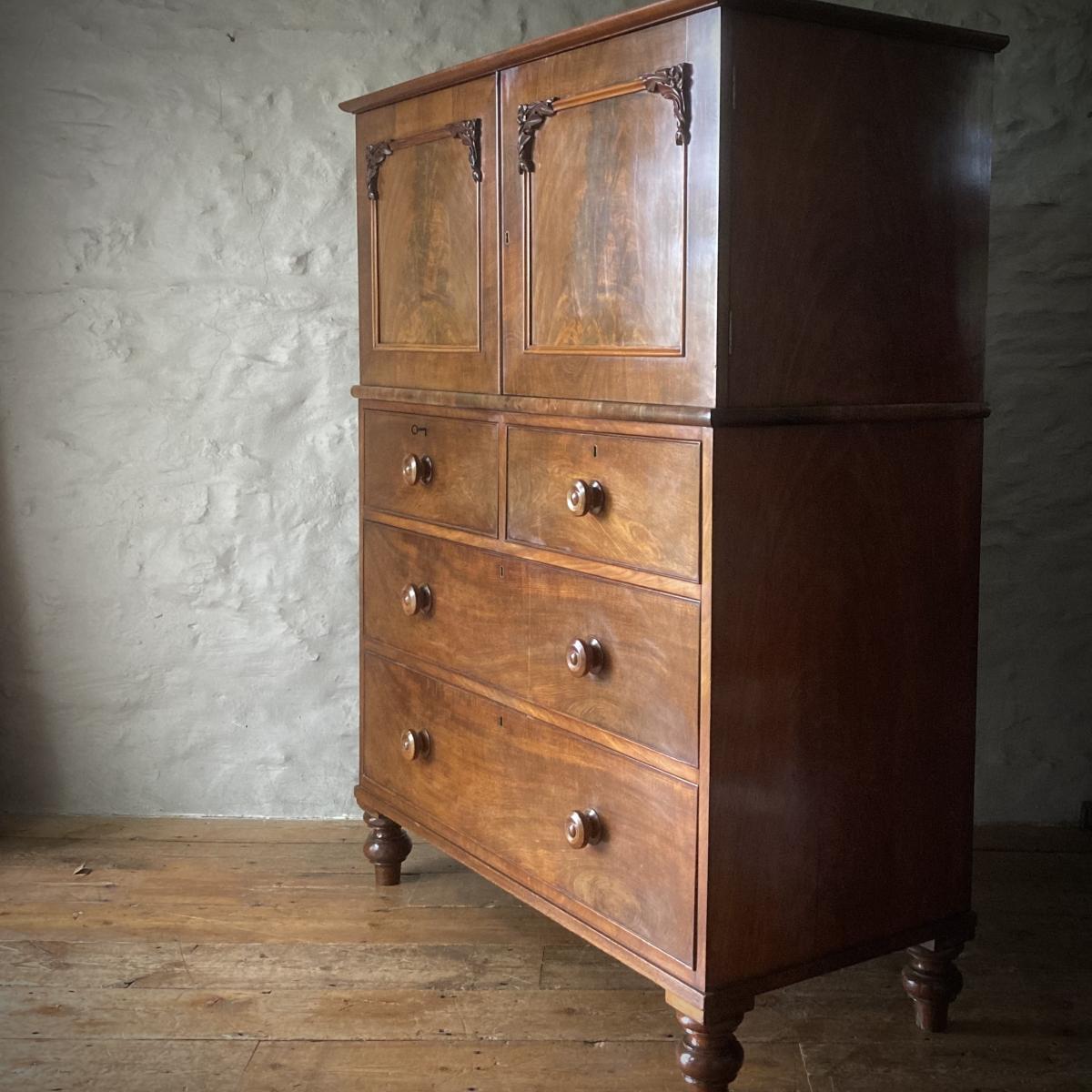
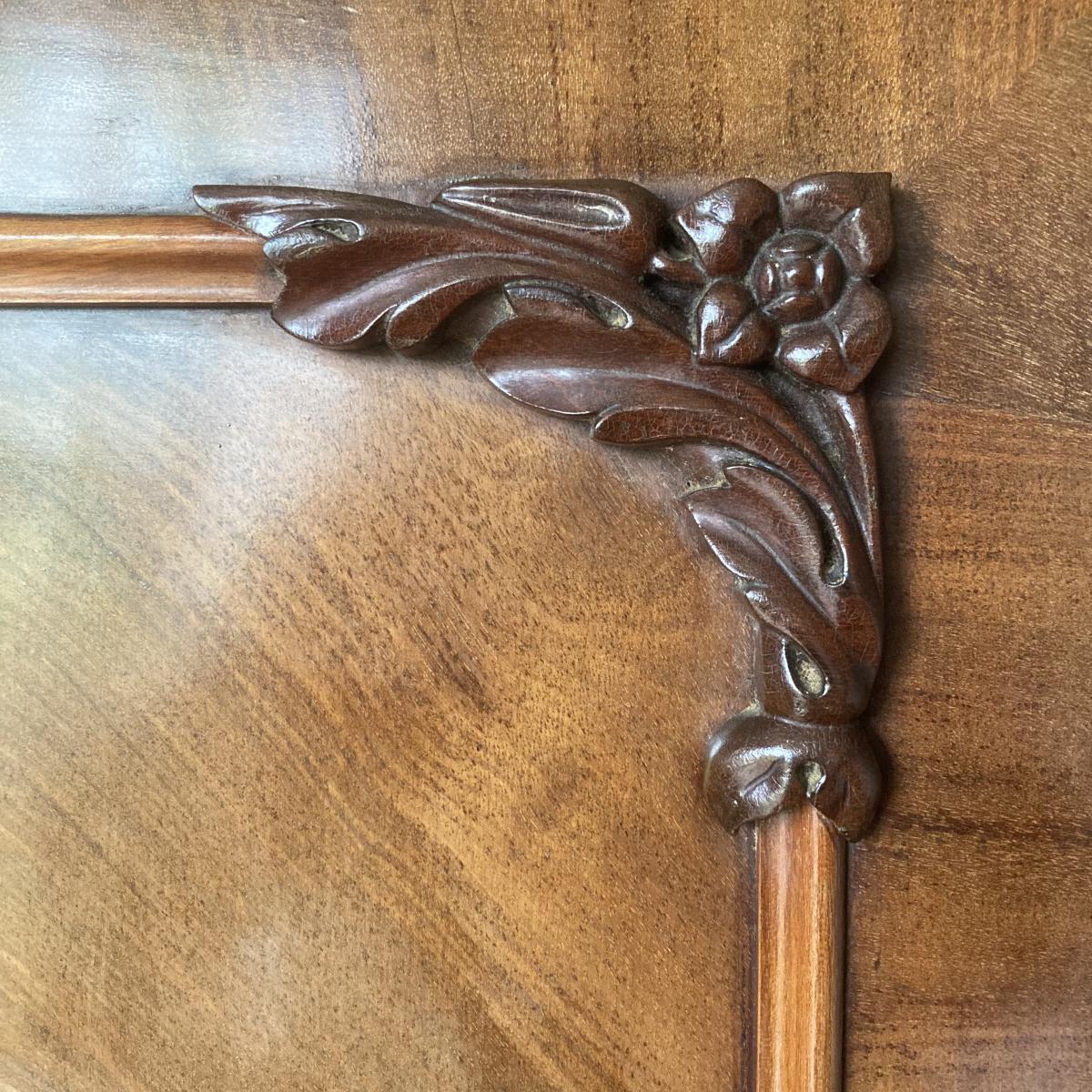
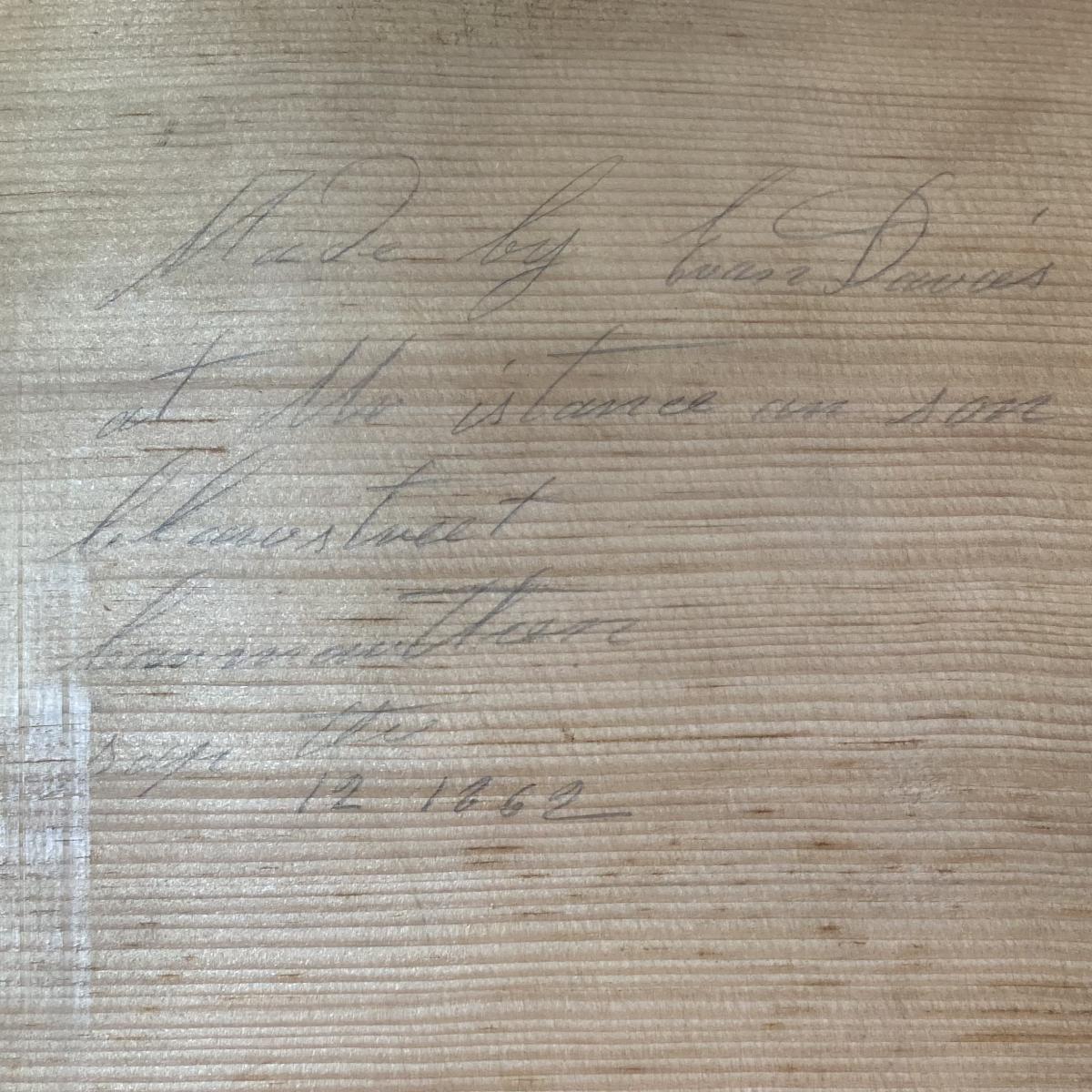
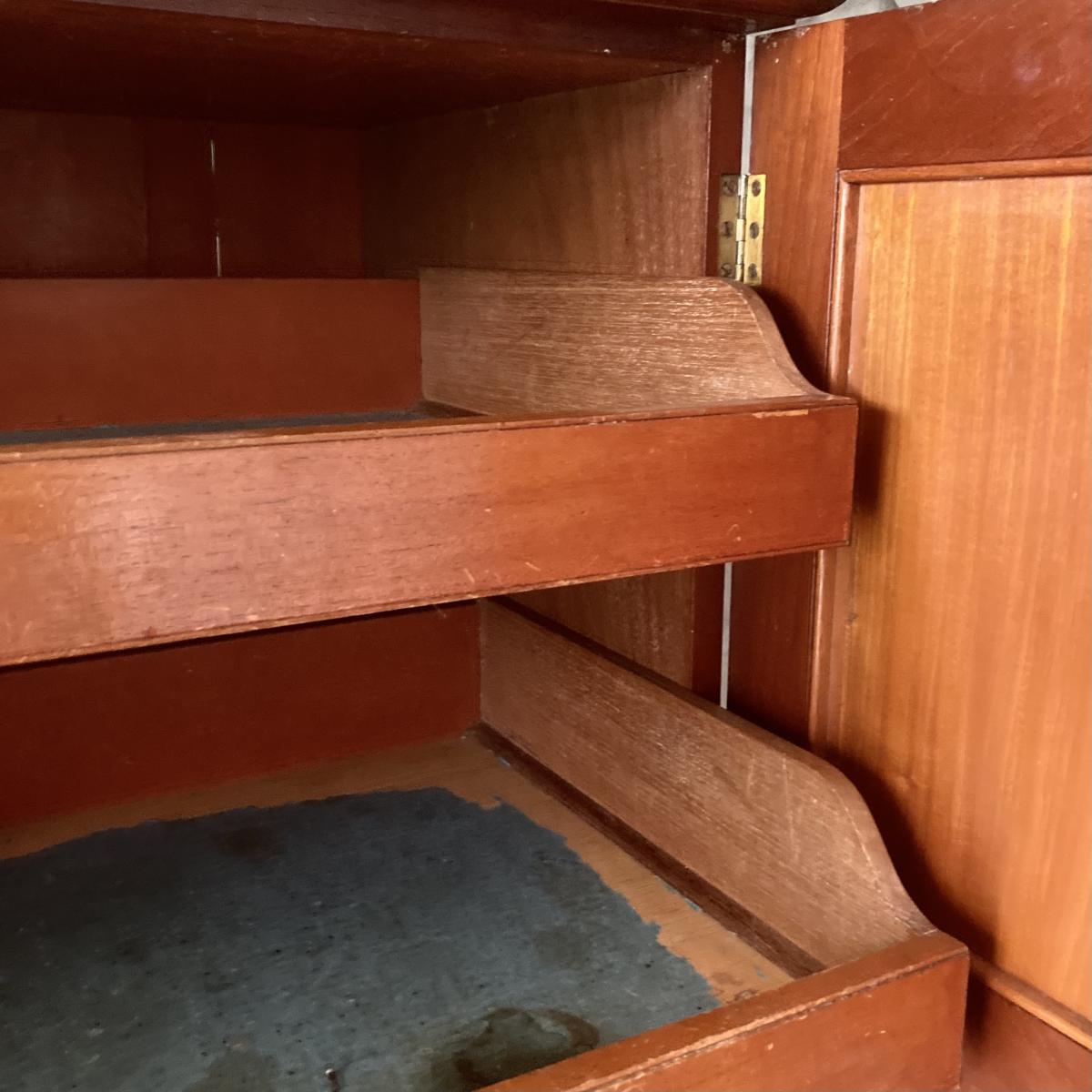


This object is eligible for a Certificate of BADA Provenance
The BADA Standard
- Since 1918, BADA has been the leading association for the antiques and fine art trade
- Members are elected for their knowledge, integrity and quality of stock
- Our clients are protected by BADA’s code of conduct
- Our dealers’ membership is reviewed and renewed annually
- Bada.org is a non-profit site: clients deal directly with members and they pay no hidden fees
An usually small and fine quality mid 19th century Welsh mahogany linen press made at Richard Istance cabinet makers Carmarthen.
The underside of the top left hand drawer has the following pencil inscription –
Made by Evan Davies at Mr Istance and son Blue Street Carmarthen September the 12th 1862.
The top section with two well figured panelled doors which have carved corner spandrels. The interior has two sliding shelves. Above a base of graduated drawers raised on turned feet. Untouched colour and surface.
Carmarthen is one of the oldest towns in Wales and is the principle centre of Carmarthenshire. The population of Carmarthen in the mid 19th century was around 11,000 and although it was losing its importance to the growth of other towns in South Wales due to the industrial revolution, it remained an important commercial and administrative county town.
Richard Istance was a trainee and journeyman with David Morley the pre-eminent cabinet-maker in 18th & 19th century Carmarthen.
Shortly after Morleys death in 1831, Richard Istance is recorded as a cabinet maker and upholsterer in Blue Street, Carmarthen and in the same year advertised the following – ‘…having laid in an extensive stock of well-seasoned timber he hopes by strict attention and moderate charges, to receive that support which it will be his ambition to merit’ and later in 1832 ‘very grateful thanks to the Nobility, Gentry and Public of Carmarthen and its Vicinity, for the very kind patronage and support.’
The above information is from cabinet-making in Carmarthenshire: research in Progress by Luke Millar & published in The Carmarthenshire Antiquary Vol. xxxvi 2000.
Luke also mentioned the custom of some Carmarthen cabinet makers signing their work ‘Despite the quantity of documented furniture from his first twenty years, the great majority of identified Morley pieces are from the1820s, signed by the workmen who made them. He was reputed to have encouraged this and it was a practice which became common among Carmarthen cabinet-makers, perhaps due to his influence’
Evan Davies is recorded in the 1861 Census for Carmarthen as a cabinet-maker aged 19 and living with his family at the Swansea Castle public house in Water street, Carmarthen where his father John Davies was publican.
See also Welsh Furniture 1250-1950 by Richard Bebb (Saer 2007) Vol II Page 229 …in 1852 he (Istance) supplied furniture worth £123 to Stradey where the owners used mainly London cabinet-makers to replace Morley’s pieces with the newer Gothic-style. In 1861, aged 64 he was still at the same address, employing five men and five apprentices, and was eventually succeeded by is son William who continued into the 1870’s. Also on page 277 is an image showing a section of carving from a chiffonier made at Richard Istance and it is very similar to the carving above the doors panels of this linen press.
In Slaters National Commercial Directory for 1859 Richard Istance is recorded under cabinet-makers in Blue Street, Carmarthen.
Richard Istance is also recorded on the BIFMO (British & Irish Furniture Makers Online) part of the Furniture History Society.
In the 1861 census for St.Peter’s, Carmarthen, Richard Istance is recorded in Blue Street age 64 as a Master cabinet-maker employing five men and five apprentices along with his wife Mary age 64, their son William age 39 also a cabinet-maker and his wife Sarah age 36.
In the 1871 census, Richard Istance is living at 98 Towy terrace, Llandeilo and is still recorded as a cabinet-maker, but also as a Preacher (Wesleyan). His son William is recorded as a cabinet-maker still in Blue Street and employing six men and three boy apprentices.
Dimensions
117.5cm wide x 53cm deep x 127.6cm highThe BADA Standard
- Since 1918, BADA has been the leading association for the antiques and fine art trade
- Members are elected for their knowledge, integrity and quality of stock
- Our clients are protected by BADA’s code of conduct
- Our dealers’ membership is reviewed and renewed annually
- Bada.org is a non-profit site: clients deal directly with members and they pay no hidden fees


